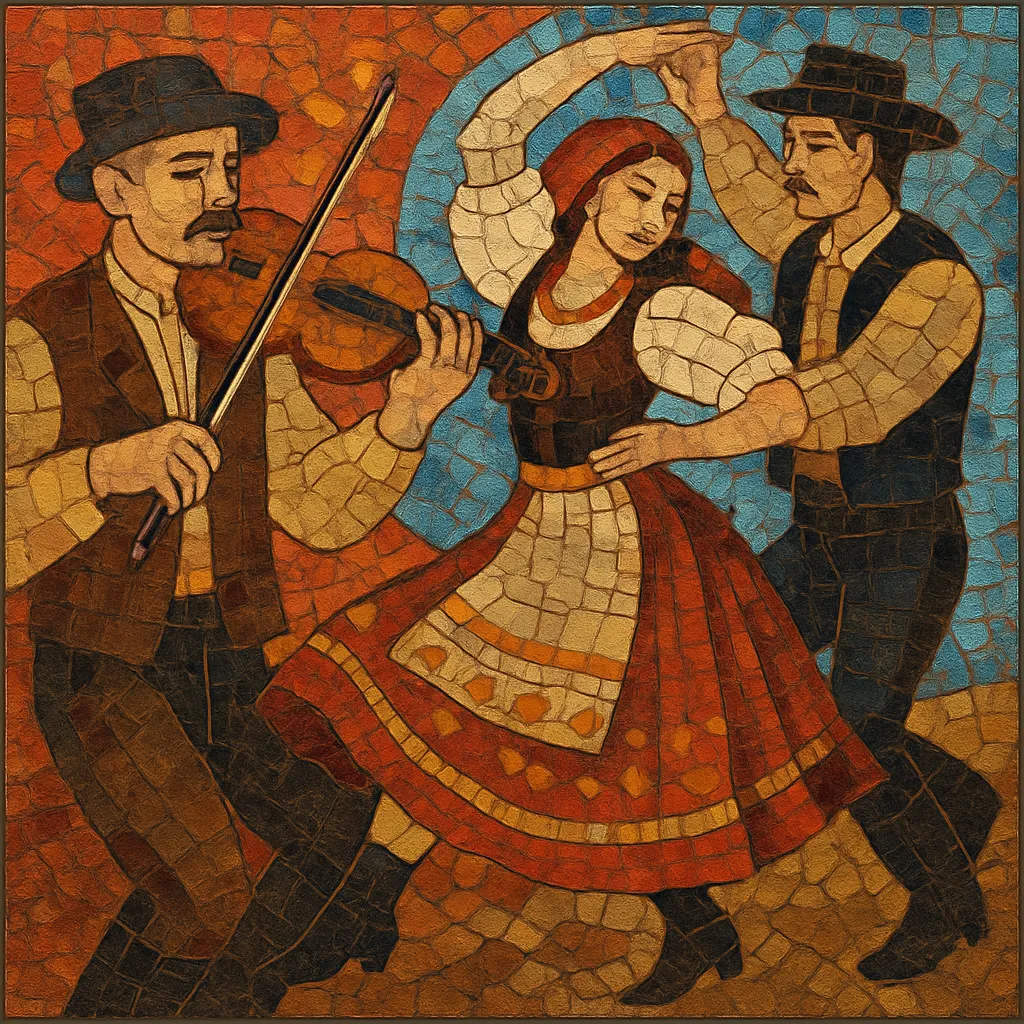Csárdás is a Hungarian dance-music genre characterized by a dramatic alternation between slow, rubato sections (lassú) and fast, driving sections (friss). Its melodies are highly ornamented and often make expressive use of the "Hungarian minor" (Gypsy) scale with augmented seconds, along with rapid modulations between minor and relative major.
Traditionally led by a prímás (lead violinist) and accompanied by cimbalom, kontra (three-string viola providing off‑beat chords), and double bass, csárdás thrives on flexible tempo, sudden accelerandi, and rhetorical pauses that highlight virtuosity and call-and-response. It is both a social dance rooted in taverns (csárda) and a concert idiom elevated by Roma ensembles and Romantic-era composers.
Csárdás emerged in Hungary in the 1840s, taking its name from the csárda (roadside inn or tavern) where village and town dances were held. It grew directly out of verbunkos, an 18th–19th century recruiting-dance tradition that supplied the dotted rhythms, ornamental style, and characteristic slow–fast architecture that define csárdás. As the Hungarian national awakening intensified around the 1848 Revolution, csárdás became a potent cultural emblem, celebrated in both rural festivities and urban salons.
Roma (Gypsy) prímás-led bands standardized the ensemble sound—solo violin over cimbalom, kontra, and bass—and codified rubato practice, off-beat accompaniment, and virtuosic cadenzas. In cities, this folk-dance idiom was arranged for café orchestras and salon performance, gaining a refined harmonic palette while preserving its rhetorical tempo freedoms.
In the late 19th and early 20th centuries, Romantic composers absorbed csárdás idioms. Franz Liszt’s Hungarian Rhapsodies, Brahms’s Hungarian Dances (drawing on related materials), and Emmerich Kálmán’s operettas placed csárdás on major European stages. Vittorio Monti’s 1904 concert showpiece "Csárdás" became an international staple for violin and other solo instruments, further canonizing the genre’s lassú–friss arc. From the Habsburg lands to the Balkans and into klezmer and café repertoires, csárdás circulated widely while remaining a living social dance in Hungary and neighboring regions.
Today, csárdás flourishes both as a community dance and as a concert vehicle for virtuoso strings. Contemporary Roma orchestras and folk-revival ensembles maintain the traditional ensemble, while conservatory-trained soloists present csárdás as dazzling showpieces, keeping its elastic tempo, flamboyant ornamentation, and alternating emotional character at the fore.


